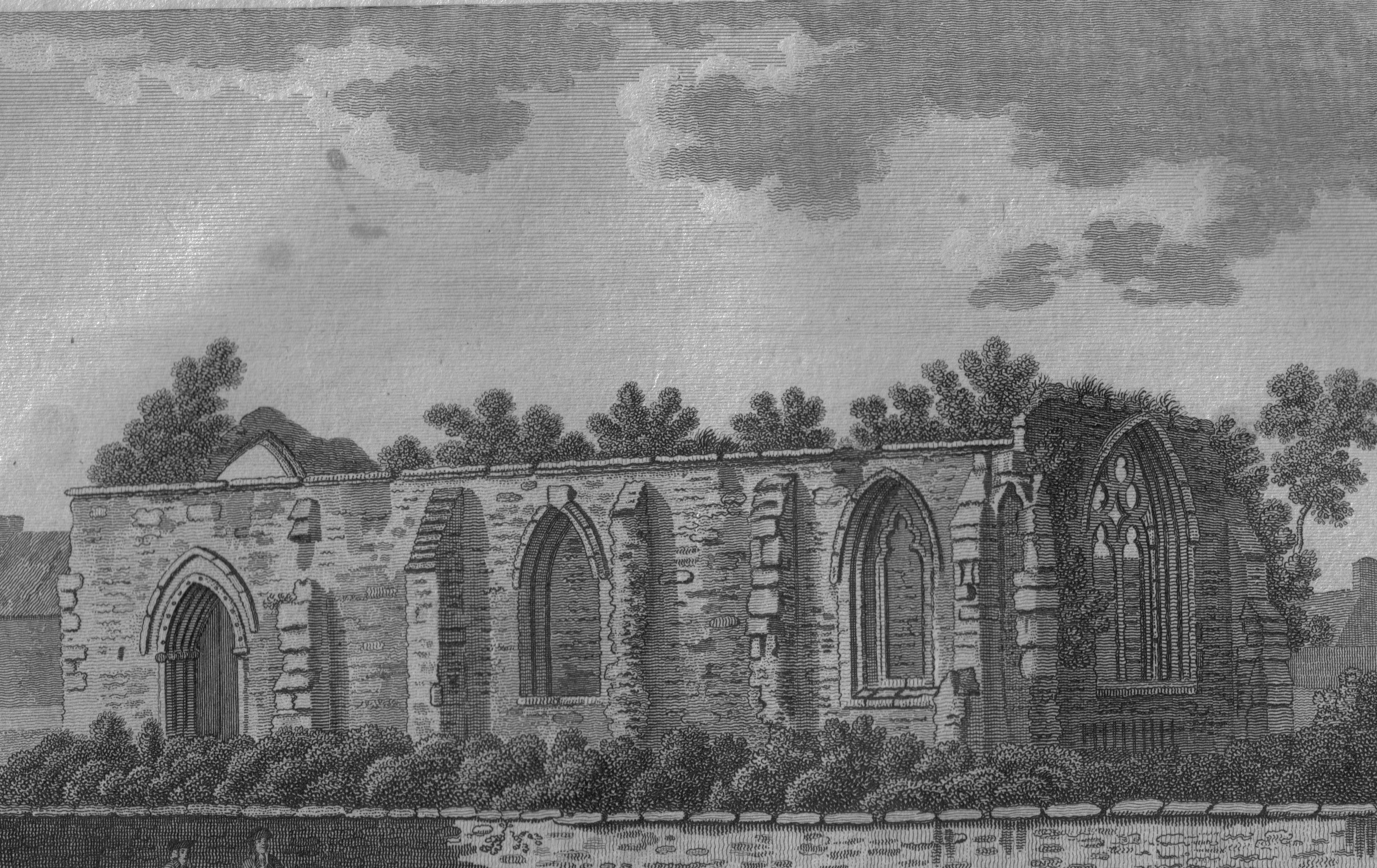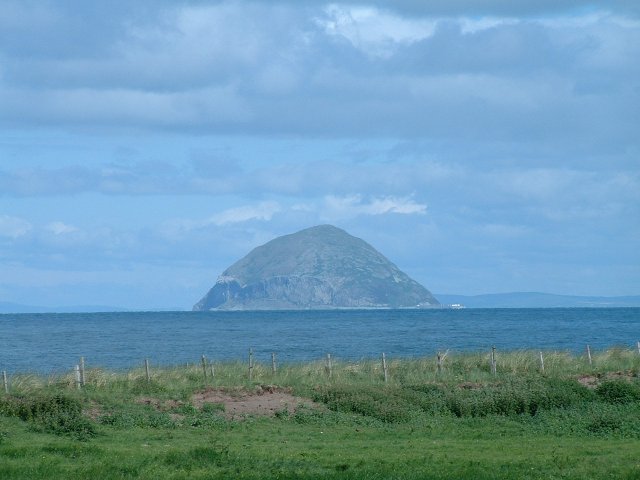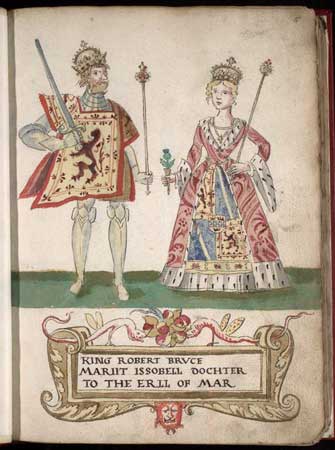|
Turnberry Castle
Turnberry Castle is a fragmentary ruin on the coast of Kirkoswald parish, near Maybole in Ayrshire, Scotland.''Ordnance of Scotland'', ed. Francis H. Groome, 1892-6. Vol.6, p.454 Situated at the extremity of the lower peninsula within the parish, it was the seat of the Earls of Carrick. Turnberry Castle is adjacent to Turnberry Golf Course. History The origins of Turnberry Castle are lost in antiquity. As to when or by whom Turnberry was built there seems to be no authentic record; but it was originally a stronghold of the Lords of Galloway, and thence passed into the possession of the Earls of Carrick around the beginning of the 13th century. In the late 13th century the castle belonged to Marjorie, the widowed Countess of Carrick. According to medieval legend, Marjorie held the visiting knight Robert de Brus captive until he agreed to marry her. The marriage between Marjorie and Robert in 1271 conveyed to him both the castle and the earldom. Their first son, also named Robe ... [...More Info...] [...Related Items...] OR: [Wikipedia] [Google] [Baidu] |
Turnberry Castle
Turnberry Castle is a fragmentary ruin on the coast of Kirkoswald parish, near Maybole in Ayrshire, Scotland.''Ordnance of Scotland'', ed. Francis H. Groome, 1892-6. Vol.6, p.454 Situated at the extremity of the lower peninsula within the parish, it was the seat of the Earls of Carrick. Turnberry Castle is adjacent to Turnberry Golf Course. History The origins of Turnberry Castle are lost in antiquity. As to when or by whom Turnberry was built there seems to be no authentic record; but it was originally a stronghold of the Lords of Galloway, and thence passed into the possession of the Earls of Carrick around the beginning of the 13th century. In the late 13th century the castle belonged to Marjorie, the widowed Countess of Carrick. According to medieval legend, Marjorie held the visiting knight Robert de Brus captive until he agreed to marry her. The marriage between Marjorie and Robert in 1271 conveyed to him both the castle and the earldom. Their first son, also named Robe ... [...More Info...] [...Related Items...] OR: [Wikipedia] [Google] [Baidu] |
Kirkoswald, South Ayrshire
Kirkoswald ( sco, Kirkossald) is a village and parish in the Carrick district of Ayrshire, Scotland, from the coast and southwest of Maybole. It takes its name from its ''kirk'' (church), dedicated to Oswald of Northumbria, who is said to have won a battle here in the 7th century. The old church, which was built in 1244 and houses the baptismal font of Robert the Bruce, is now a ruin in the grounds of the modern church, which was built in 1777 to a design by Robert Adam. Kirkoswald is also noted for its connection with Robert Burns, whose maternal ancestors, the Brouns, were from the village. Burns also attended school here, and would later base the characters Tam o' Shanter, Kirkton Jean and souter Johnnie on village locals Douglas Graham, Jean Aird and John Davidson, the shoemaker. Kirkoswald village had a population of 194 in 1991. Kirkoswald parish is in area, and also contains the coastal village of Maidens. Landmarks include Turnberry Castle, the ancient seat of the Ea ... [...More Info...] [...Related Items...] OR: [Wikipedia] [Google] [Baidu] |
Maybole
Maybole is a town and former burgh of barony and police burgh in South Ayrshire, Scotland. It had an estimated population of in . It is situated south of Ayr and southwest of Glasgow by the Glasgow and South Western Railway. The town is bypassed by the A77. History Maybole has Middle Ages roots, receiving a charter from Donnchadh, Earl of Carrick in 1193. In 1516 it was made a burgh of regality, although for generations it remained under the suzerainty of the Kennedys, afterwards Earls of Cassillis and (later) Marquesses of Ailsa, the most powerful family in Ayrshire. The Marquess of Ailsa lived at Cassillis House, just outside Maybole until its sale in 2007. In the late seventeenth century, a census recorded Maybole was home to 28 "lords and landowners with estates in Carrick and beyond." In former times, Maybole was the capital of the district of Carrick, Scotland, and for long its characteristic feature was the family mansions of the barons of Carrick. Maybole ... [...More Info...] [...Related Items...] OR: [Wikipedia] [Google] [Baidu] |
Ayrshire
Ayrshire ( gd, Siorrachd Inbhir Àir, ) is a historic county and registration county in south-west Scotland, located on the shores of the Firth of Clyde. Its principal towns include Ayr, Kilmarnock and Irvine and it borders the counties of Renfrewshire and Lanarkshire to the north-east, Dumfriesshire to the south-east, and Kirkcudbrightshire and Wigtownshire to the south. Like many other counties of Scotland it currently has no administrative function, instead being sub-divided into the council areas of North Ayrshire, South Ayrshire and East Ayrshire. It has a population of approximately 366,800. The electoral and valuation area named Ayrshire covers the three council areas of South Ayrshire, East Ayrshire and North Ayrshire, therefore including the Isle of Arran, Great Cumbrae and Little Cumbrae. These three islands are part of the historic County of Bute and are sometimes included when the term ''Ayrshire'' is applied to the region. The same area is known as ''Ayr ... [...More Info...] [...Related Items...] OR: [Wikipedia] [Google] [Baidu] |
Scotland
Scotland (, ) is a country that is part of the United Kingdom. Covering the northern third of the island of Great Britain, mainland Scotland has a border with England to the southeast and is otherwise surrounded by the Atlantic Ocean to the north and west, the North Sea to the northeast and east, and the Irish Sea to the south. It also contains more than 790 islands, principally in the archipelagos of the Hebrides and the Northern Isles. Most of the population, including the capital Edinburgh, is concentrated in the Central Belt—the plain between the Scottish Highlands and the Southern Uplands—in the Scottish Lowlands. Scotland is divided into 32 administrative subdivisions or local authorities, known as council areas. Glasgow City is the largest council area in terms of population, with Highland being the largest in terms of area. Limited self-governing power, covering matters such as education, social services and roads and transportation, is devolved from ... [...More Info...] [...Related Items...] OR: [Wikipedia] [Google] [Baidu] |
Earl Of Carrick
Earl of Carrick (or Mormaer of Carrick) is the title applied to the ruler of Carrick (now South Ayrshire), subsequently part of the Peerage of Scotland. The position came to be strongly associated with the Scottish crown when Robert the Bruce, who had inherited it from his maternal kin, became King of the Scots in the early 14th century. Since the 15th century, the title of Earl of Carrick has automatically been held by the heir apparent to the throne, thus the current holder of the title is Prince William, Duke of Rothesay. Early rulers The earldom emerged in 1186, out of the old Lordship of Galloway, which had previously encompassed all of what is now known as Galloway as well as the southern part of Ayrshire. Though the Lords of Galloway recognised the King of Scots as their overlord, their lordship was effectively a separate kingdom, and had its own laws. The first Lord recorded is Fergus, who died in 1161 leaving two sons: Uchtred and Gille Brigte (Gilbert). As was ... [...More Info...] [...Related Items...] OR: [Wikipedia] [Google] [Baidu] |
Turnberry (golf Course)
Turnberry is a golf resort on the Firth of Clyde in Ayrshire, southwest Scotland. It comprises three links golf courses, a golf academy, a five-star James Miller-designed hotel from 1906, along with lodge and cottage accommodations. Turnberry was a popular golf course and resort from its inception, made accessible because of the Maidens and Dunure Light Railway. It closed in both World Wars for military use, and there was concern it would not open following World War II, but it was redesigned by Mackenzie Ross and re-opened in 1951. The course was the scene of the 1977 Open Championship, where Tom Watson scored a close victory over Jack Nicklaus. The property has been owned by the Trump Organization since 2014, who now brand the course Trump Turnberry. Location The resort is south of Glasgow, on the A719 just north of the A77, a major road from Glasgow to Stranraer via Ayr. It is sited on headland along the Firth of Clyde, overlooking the Isle of Arran and Ailsa Craig ... [...More Info...] [...Related Items...] OR: [Wikipedia] [Google] [Baidu] |
Lords Of Galloway
The lords of Galloway consisted of a dynasty of heirs who were lords (or kings) and ladies who ruled over Galloway in southwest Scotland, mainly during the High Middle Ages. Many regions of Scotland, including Galloway and Moray, periodically had kings or subkings, similar to those in Ireland during the Middle Ages. The Scottish monarch was seen as being similar to a high king (''Ard-Righ'' in Gaelic). The lords of Galloway would have either paid tribute to the Scottish monarch, or at other times ignored him. The Lords of Galloway are fairly well recorded in the 12th and 13th centuries, but the records are incomplete or conflicting at other times. Later on, the kings were known as "lords" at the Scottish court, and "kings" at home, finally becoming "lords" in both arenas. The boundaries of the Kingdom of Galloway were ill-defined, and varied over time. During many periods Galloway was much larger than it is today, and took in parts of southern Ayrshire, such as Carrick, Upper ... [...More Info...] [...Related Items...] OR: [Wikipedia] [Google] [Baidu] |
Marjorie, Countess Of Carrick
:''See also Marjorie Bruce, her granddaughter.'' Marjorie of Carrick (also called Margaret; died before 9 November 1292) was Countess of Carrick, Scotland, from 1256 to 1292, and is notable as the mother of Robert the Bruce. Family Marjorie was the daughter and heiress of Niall Mac Dhonnchad, 2nd Earl of Carrick and his wife Margaret Stewart. Her mother's father was Walter Stewart, 3rd High Steward of Scotland. Her father Niall was the head of their clan, having no sons, in 1255 he transferred the title of clan chieftain to his nephew Roland, and upon Niall's death in 1256, Marjorie succeeded him to become the 3rd Countess of Carrick in her own right. Marjorie married Adam of Kilconquhar, who died during the Eighth Crusade in 1271. Marjorie and Adam had one child before his death, Martha. Then, as the story goes, a handsome young man arrived one day to tell her of her husband's death in the Holy Land. He was Robert de Brus, 6th Lord of Annandale, and he had been a companio ... [...More Info...] [...Related Items...] OR: [Wikipedia] [Google] [Baidu] |
Robert De Brus, Jure Uxoris Earl Of Carrick
Robert de Brus (11 July 1243 – 15 March 1304Richardson, Douglas, Everingham, Kimball G. "Magna Carta Ancestry: A Study in Colonial and Medieval Families", Genealogical Publishing Com, 2005: p732-3, ,link/ref>), 6th Lord of Annandale, ''jure uxoris'' Earl of Carrick (1252–1292), Lord of Hartness, Writtle and Hatfield Broad Oak, was a cross-border lord, and participant of the Second Barons' War, Ninth Crusade, Welsh Wars, and First War of Scottish Independence, as well as father to the future king of Scotland Robert the Bruce. Of Scoto-Norman-Irish heritage, through his father he was a third-great grandson of David I of Scotland. Other ancestors included Richard de Clare, 2nd Earl of Pembroke, William Marshal, 1st Earl of Pembroke, Henry I of England and Aoife MacMurrough, daughter of Dermot MacMurrough. Life The son and heir of Robert de Brus, 5th Lord of Annandale and Lady Isabella de Clare, daughter of the Earl of Gloucester and Hertford, his birth date is generally a ... [...More Info...] [...Related Items...] OR: [Wikipedia] [Google] [Baidu] |
Robert The Bruce
Robert I (11 July 1274 – 7 June 1329), popularly known as Robert the Bruce (Scottish Gaelic: ''Raibeart an Bruis''), was King of Scots from 1306 to his death in 1329. One of the most renowned warriors of his generation, Robert eventually led Scotland during the First War of Scottish Independence against England. He fought successfully during his reign to regain Scotland's place as an independent kingdom and is now revered in Scotland as a national hero. Robert was a fourth great-grandson of King David I, and his grandfather, Robert de Brus, 5th Lord of Annandale, was one of the claimants to the Scottish throne during the " Great Cause". As Earl of Carrick, Robert the Bruce supported his family's claim to the Scottish throne and took part in William Wallace's revolt against Edward I of England. Appointed in 1298 as a Guardian of Scotland alongside his chief rival for the throne, John Comyn of Badenoch, and William Lamberton, Bishop of St Andrews, Robert resigned ... [...More Info...] [...Related Items...] OR: [Wikipedia] [Google] [Baidu] |
Battle Of Bannockburn
The Battle of Bannockburn ( gd, Blàr Allt nam Bànag or ) fought on June 23–24, 1314, was a victory of the army of King of Scots Robert the Bruce over the army of King Edward II of England in the First War of Scottish Independence. It was a major turning point in the war, which only officially ended 14 years later with the ''de jure'' restoration of Scottish independence under the Treaty of Edinburgh–Northampton; for this reason, Bannockburn is considered a landmark moment in Scottish history. King Edward II invaded Scotland after Bruce demanded in 1313 that all supporters, still loyal to ousted Scottish king John Balliol, acknowledge Bruce as their king or lose their lands. Stirling Castle, a Scots royal fortress occupied by the English, was under siege by the Scottish army. King Edward assembled a formidable force of soldiers to relieve it – the largest army ever to invade Scotland. The English summoned 25,000 infantry soldiers and 2,000 horses from England, Irelan ... [...More Info...] [...Related Items...] OR: [Wikipedia] [Google] [Baidu] |






